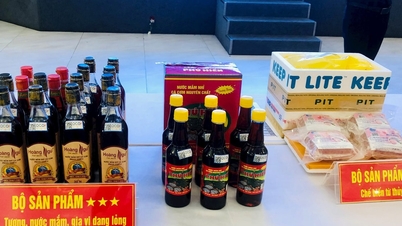Former SpaceX engineer creates startup to send 6 tons of cargo to the Moon every year
Impulse Space, a startup founded by SpaceX’s former propulsion chief, has announced plans to send up to 6 tons of cargo to the Moon each year, starting in 2028. It’s targeting a gap in the space transportation market: cargo too large for NASA’s CLPS program but too small for SpaceX or Blue Origin’s human landers.
Impulse’s solution is to combine a high-energy “Helios” booster stage with a new lander. Both would be launched on a standard rocket into Earth orbit, with Helios delivering the lander to a seven-day lunar orbit. The lander would then separate and land on the surface.

Simulation of the Helios spacecraft. (Source: Impulse Space)
Impulse is developing a lander engine that will use the same fuel as the Saiph thrusters used on Mira. The engine will need to be able to adjust its thrust, restart, and achieve high efficiency for precise control in a vacuum.
Targeted shipments range in mass from 0.5 to 13 tons – including rovers, habitation modules, power generators, communications systems, or lunar rovers.
Helios has entered deep development, with its first flight expected in late 2026. Impulse hopes to conduct multiple flights per year from 2028.
Pixnapping: Android Threat Steals Crypto Wallet Data From Screen
Researchers at Carnegie Mellon University have discovered a new Android vulnerability called “Pixnapping.” The technique allows hackers to steal data displayed on the screen—like cryptocurrency seed phrases and two-factor authentication (2FA) codes—without requiring special permissions.
Pixnapping exploits a GPU side channel technique called GPU.zip. When a user installs a malicious app, it silently calls other apps like a cryptocurrency wallet or Google Authenticator, and then uses graphical operations to analyze each pixel for sensitive information.

When the screen becomes a weak point Hackers can steal digital wallet data just by looking at each pixel. (Source: Cryptonews)
The attack was successfully tested on Google Pixel 6 to Pixel 9 and Samsung Galaxy S25 devices running Android 13 to 16. 2FA code recovery rates ranged from 29% to 73% and the entire six-digit code could be retrieved in less than 30 seconds.
Experts advise cryptocurrency users not to display their seed phrase or 2FA code on internet-connected devices. Instead, they should use a hardware wallet to securely store their private keys and recovery phrase.
Instagram strengthens content protections for teen users
Instagram has expanded its protections for teen accounts, defaulting to “13+” mode – the PG-13 equivalent of a movie rating – to limit inappropriate content for those under 18. Parents can choose a stricter “restricted content” mode, which prevents teens from viewing, commenting on, or receiving comments on posts. Teens cannot change this setting without their parents’ permission.

Instagram says it is protecting teens by limiting them to PG-13 content. (Source: MSN)
Instagram will block search results for mature keywords like “alcohol” or “blood,” even if they’re misspelled. Accounts sharing inappropriate content will be blocked from following, messaging, or commenting with teens.
The platform uses AI to predict a user's age and apply appropriate protections. AI responses are also PG-13-rated to avoid inappropriate content.
Source: https://vtcnews.vn/cong-nghe-15-10-cuoc-dua-len-mat-trang-nong-tung-ngay-ar971211.html


![[Photo] The 18th Hanoi Party Congress held a preparatory session.](https://vphoto.vietnam.vn/thumb/1200x675/vietnam/resource/IMAGE/2025/10/15/1760521600666_ndo_br_img-0801-jpg.webp)











































































































Comment (0)